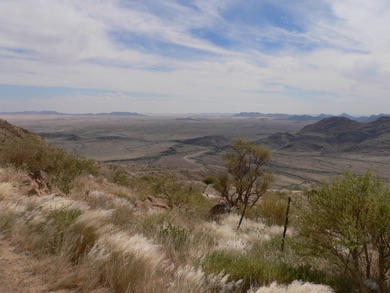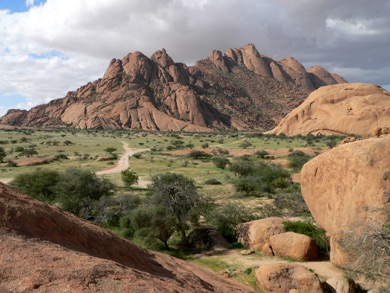

Buprestid Beetles of Namibia




Introduction:
by S. Gottwald
(project coordinator)
Area: 824.116 km²
Population: 2,1 mill.
Capital: Windhoek
Photo courtesy: M. & B. Uhlig
Namibia is a large country located in the southwestern corner of Africa and one of the driest regions on earth. The Namib Desert extends along the western coast over some 1.350 km, broadens from 50-160 km, and comes to an end at the vaulted escarpment of the central highlands. To the east these transition into the Kalahari, a vast sandy basin reaching far north above Southern Africa. It is intermitted by a large depression watered by the Okavango River, which ceases in the wetlands of the Okavango-Delta in Botswana. In the south the Southern African Karoo reaches Namibia, while the Namib Desert approximately terminates at the Olifants River in South Africa. Average rainfall across the country is 270 mm per year, and only in the north-east (Caprivi strip) the annual precipitation reaches 700 mm. To the west, in the direction of the Namib, the amount of rainfall drops abruptly. These arid areas may show longer periods of drought, in the wetter north-east it rains more regularly and intense. The wet season starts generally from October/November (Summer Rainfall Region of northern Namibia), with a peak - if any - to be expected in January/February. Only in the south rain occurs in Winter (Winter Rainfall Cape Region). Overall there are more than 300 sunny days per year. The climate is characterized by two seasons, the cool winter from May to September and the warm to hot summer from October until April. Seasonal differences level out northwards. The major vegetation forms in Namibia are savanna (64 %), dry forest (20 %) and desert vegetation (16 %). Some 25 % of the country are still more or less true wilderness, which are to a great extent protected in national conservation areas, but essential parts (45 %) are cultivated steppe or farmland.


Gross Spitzkuppe, Erongo
Spreetskloofte-Pass, Khomas
The project was initially triggered through an attempt to identify the Buprestidae specimens collected by entomologists of the Berlin Museum of Natural History during several field trips to Namibia since 1989. Some of these were conducted in the framework of the multi-disciplinary research project BIOTA Southern Africa (Biodiversity Monitoring Transect Analysis in Africa), its main objective being the documentation and monitoring of biodiversity in time and space. Combined with own collections, those of other colleagues or museums, and the substantial materials housed in German scientific institutions originating from the colonial period, this constitutes a appropriate basis for further ongoing investigations.
© Copyright 2021. All rights reserved.